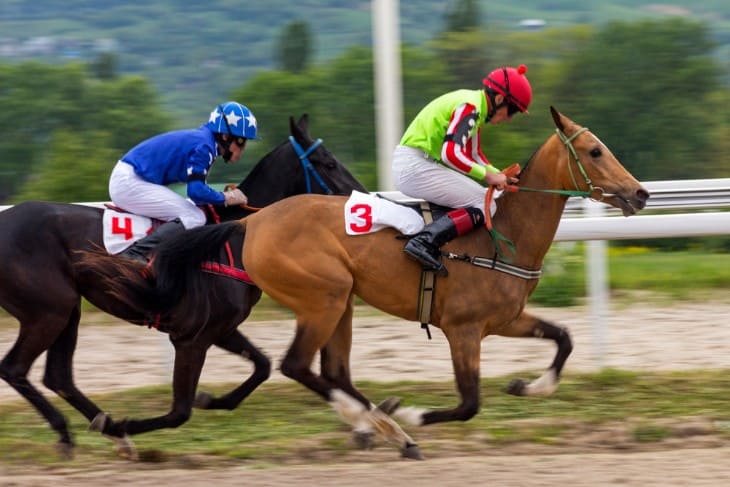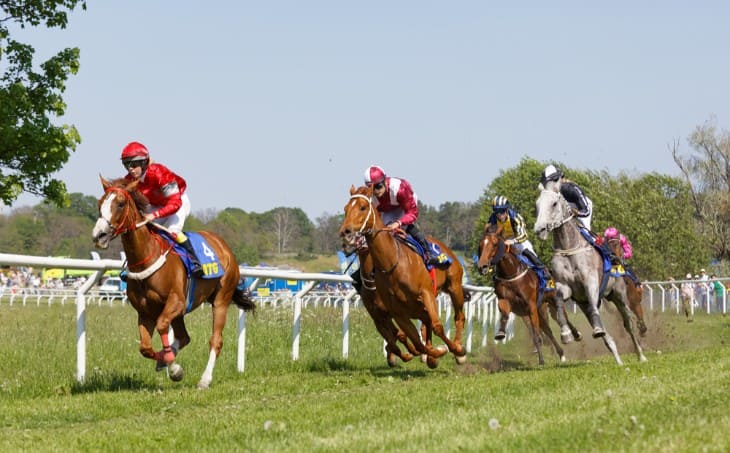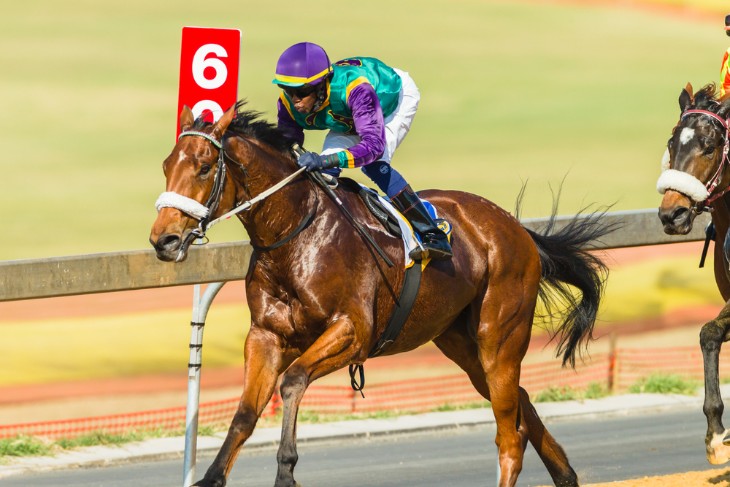- Historical Successes of Late Bloomers in Racing
- The Role of Jockeys in Nurturing Late Surge Performers
- Training Regimens Tailored for Late Surge Horses
- Financial Implications of Betting on Late Surge Horses
- Equipment and Gear: Enhancing Late Surge Capabilities
- The Science Behind the Late Surge Phenomenon
- Public Perception and Media Coverage of Late Surge Horses
- Case Studies: Iconic Late Surge Victories
- Conclusion
The phenomenon of late surge horses in horse racing is a subject of considerable intrigue. These horses, known for their ability to dramatically accelerate in the closing stages of a race, exhibit a unique psychological profile. Unlike their counterparts who lead from the start, late surge horses often display a calmer demeanour in the early stages of a race. This temperament allows them to conserve energy, which is crucial for their explosive finish. Behavioural studies on these equines suggest a higher level of patience and an ability to withstand the pressure of trailing behind for most of the race.
Understanding the psychology of late surge horses is crucial for trainers and bettors alike. Trainers can tailor their methods to nurture these traits, while bettors can make more informed decisions. It's important to recognise that not all horses with a calm early-race demeanour are guaranteed late surge candidates. Factors such as lineage, training, and individual temperament play significant roles in developing this racing style.
Historical Successes of Late Bloomers in Racing
- Notable Horses:
- Seabiscuit: Perhaps the most famous late bloomer, Seabiscuit's initial years were unremarkable. However, his astounding success later in his career made him an icon.
- Zenyatta: Known for her remarkable 19-race winning streak, Zenyatta was renowned for her late surges, often coming from behind to win in the final moments.
- Impact on Betting:
- Underdog Appeal: Late bloomers like Seabiscuit and Zenyatta often start their careers with modest success, leading to longer odds and higher potential payouts for bettors.
- Historical Trends: Studying the career trajectories of late bloomers can provide bettors with insights into potential late surge candidates.
The history of horse racing is dotted with instances where late bloomers have defied the odds. These horses, often overlooked in their early careers, have gone on to achieve remarkable success. The stories of such equines have a dual impact. On one hand, they inspire trainers to invest time and patience in developing late surge talents. On the other, they offer lucrative opportunities for bettors willing to wager on potential late bloomers. The historical successes of these horses serve as a testament to the unpredictable and thrilling nature of horse racing.
The Role of Jockeys in Nurturing Late Surge Performers
- Strategy and Patience:
- Understanding the Horse: A jockey's deep understanding of their horse's capabilities and temperament is crucial. This knowledge helps in deciding when to hold back and when to push for a late surge.
- Timing: The perfect timing for a late surge is a skill honed by experience. A premature sprint can exhaust the horse, while a delayed one can miss the opportunity entirely.
- Communication and Bond:
- Non-Verbal Cues: Jockeys communicate with their horses through a series of non-verbal cues. This silent dialogue is essential for executing a late surge strategy.
- Trust and Bond: A strong bond between horse and jockey can significantly enhance performance. Horses that trust their riders are more likely to respond positively to late-race commands.
The role of the jockey in executing a successful late surge cannot be overstated. It requires a blend of strategy, patience, and a deep understanding of the horse. A jockey must know precisely when to conserve energy and when to unleash the full power of the horse. This fine balance is often the difference between victory and defeat in races that favour late surge performers. The synergy between horse and jockey is a dance of intuition and trust, integral to the thrilling spectacle of late surge victories.
Training Regimens Tailored for Late Surge Horses
The training of late surge horses requires a specific regimen that differs markedly from traditional racehorse training. This approach focuses on building stamina and explosive speed for the final stretch of the race. Training late surge horses involves a careful balance between endurance exercises and short bursts of high-intensity training. This combination helps in developing the horse's ability to maintain a steady pace before executing a powerful finish.
Another key aspect of training is mental conditioning. Late surge horses must be accustomed to trailing behind in a race without losing focus or becoming anxious. This mental training is as crucial as physical conditioning. Trainers often simulate race conditions, allowing these horses to experience being behind and then finding the right moment to break ahead. This targeted approach prepares the horse not just physically, but also psychologically, for the demands of Come-from-Behind Betting.

Financial Implications of Betting on Late Surge Horses
- Risk and Reward:
- Higher Odds: Late surge horses often start with higher odds due to their unpredictable nature, offering potentially larger payouts.
- Risk Factor: The unpredictable nature of late surge horses means there's a higher risk involved, as their performance can be significantly influenced by various factors.
- Market Dynamics:
- Betting Trends: Late surge horses can impact betting trends, as savvy bettors look for undervalued horses with potential for a strong finish.
- Influence on Odds: The popularity of a late surge horse among bettors can lead to a shift in odds, affecting the betting landscape.
Betting on late surge horses presents a unique set of financial implications. The allure of a high payoff due to longer odds is counterbalanced by the inherent risk associated with this betting strategy. Late surge horses are often not the favourites at the start of a race, making them attractive options for bettors seeking higher returns. However, the unpredictability of their performance demands a more nuanced understanding of the many variables at play. Bettors who can effectively assess these horses' potential based on training, track conditions, and the jockey's skill stand to gain significantly in this high-stakes betting game.
Equipment and Gear: Enhancing Late Surge Capabilities
Selecting the right equipment and gear is essential in enhancing the performance of late surge horses. This includes choosing the appropriate saddle, bridle, and horseshoes that align with the horse's racing style. Lightweight gear is often preferred for late surge horses to minimize any hindrance during their explosive final sprint. Moreover, the type of horseshoes can be adjusted depending on track conditions, with some designs offering better grip for late acceleration, especially on slippery surfaces.
Another key aspect is the use of protective gear, such as leg wraps or boots, which are vital in preventing injuries during high-speed racing. Trainers must ensure that such equipment does not restrict the horse's natural movement, especially during the critical moment of a late surge. The perfect combination of gear can significantly aid a horse's performance, making the difference in tight races where every fraction of a second counts in Come-from-Behind Betting.
The Science Behind the Late Surge Phenomenon
The late surge phenomenon in horse racing is not just a matter of chance; it is deeply rooted in science. Biomechanical analysis reveals that late surge horses often possess unique physical attributes, such as greater lung capacity and more efficient oxygen utilisation, which contribute to their ability to conserve energy for a powerful finish. Additionally, these horses typically have a higher proportion of fast-twitch muscle fibers, which are crucial for short bursts of high-speed running.
Equally important is the genetic aspect. Scientific studies have indicated that the propensity for late surging can be hereditary, passed down through generations of racehorses. This understanding has implications for breeding practices, as breeders might favour horses with a known lineage of late surging. Recognising and harnessing these scientific factors is key for trainers and bettors alike, particularly in the realm of Come-from-Behind Betting.

Public Perception and Media Coverage of Late Surge Horses
- Media Narratives:
- Underdog Stories: The media often frames late surge horses as underdogs, creating compelling narratives that captivate audiences.
- Dramatic Race Coverage: Highlighting the suspense and unpredictability of late surges, media coverage adds to the excitement of the sport.
- Influence on Public Perception:
- Inspiring New Fans: The dramatic victories of late surge horses often attract new fans to horse racing, drawn by the thrill and unpredictability.
- Shaping Betting Trends: Media portrayal of late surge horses can influence betting trends, as public perception sways towards favouring these equine athletes.
The public perception and media coverage of late surge horses play a significant role in shaping the landscape of horse racing. These horses, often portrayed as underdogs overcoming the odds, offer captivating stories that appeal to a broad audience. The media’s focus on the dramatic nature of their victories enhances the excitement surrounding the sport, drawing in new fans and bettors. This coverage also influences betting trends, as the public's fascination with late surge horses can lead to a shift in how people place their bets. The allure of a last-minute victory, coupled with the media's portrayal of these equine athletes, makes Come-from-Behind Betting an enticing aspect of horse racing culture.
Case Studies: Iconic Late Surge Victories
- Memorable Races:
- Affirmed vs. Alydar (1978 Belmont Stakes): A classic example where Affirmed, known for his late surges, narrowly defeated Alydar in a thrilling finish.
- Mine That Bird (2009 Kentucky Derby): Starting as a longshot, Mine That Bird stunned the racing world with an incredible late surge to win.
- Impact on Horse Racing:
- Historical Significance: These victories have become a part of horse racing lore, celebrated for their dramatic nature.
- Influence on Future Races: Such iconic late surges have inspired trainers and jockeys to develop strategies centred around Come-from-Behind Betting.
The world of horse racing is replete with case studies of iconic late surge victories that have left an indelible mark on the sport. These races not only provide thrilling spectacles for fans but also serve as valuable lessons for those involved in the sport. They demonstrate the potential of late surge horses to defy odds and expectations, often leading to legendary status for both the horse and jockey involved. The ripple effect of such races is significant, influencing training techniques, betting strategies, and even breeding choices for generations to come.
Conclusion
In conclusion, the phenomenon of late surge horses in horse racing is a multifaceted subject, encompassing aspects of psychology, training, equipment, and genetics. These equine athletes have not only redefined many aspects of horse racing but have also added a layer of excitement and unpredictability to the sport. The allure of Come-from-Behind Betting lies in the thrill of witnessing an underdog overcoming the odds in the final moments of a race. The impact of late surge horses extends beyond the track, influencing betting trends, media narratives, and public perception. As horse racing continues to evolve, the legacy of these remarkable animals and their breathtaking finishes will undoubtedly endure, captivating the hearts of fans and bettors alike.
For more information:








